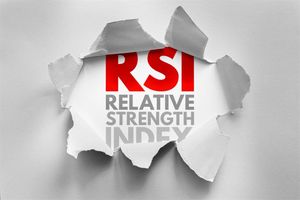
The financial markets are currently navigating a perplexing economic landscape where long-term inflation expectations are on the rise, even as the Federal Reserve initiates interest rate cuts. In September 2025, the University of Michigan's survey of consumers reported a significant jump in long-run inflation expectations (for the next five years) to 3.9%, marking a second consecutive monthly increase. This comes at a time when the Federal Reserve, at its September 17 meeting, cut its benchmark federal funds rate by 25 basis points to a target range of 4.00%-4.25%—its first reduction of the year. This divergence presents a complex challenge, hinting at persistent inflationary pressures that could significantly reshape investor strategies and market dynamics.
This counterintuitive scenario has immediate implications for financial markets. Bond yields, particularly on longer-term Treasuries, have climbed, signaling investor demand for greater compensation for inflation risk, rather than falling in response to Fed easing. Equity markets, while generally supported by lower borrowing costs, face headwinds from the potential re-evaluation of growth stock valuations. The situation underscores a growing skepticism among market participants about the central bank's long-term ability or willingness to keep inflation anchored at its 2% target, potentially forcing a defensive rotation in investment portfolios.
What Happened and Why It Matters
In a move that has sent ripples of uncertainty across global financial markets, the Federal Reserve cut its benchmark interest rate in September 2025, yet simultaneously, long-term inflation expectations, as measured by the University of Michigan survey, surged to 3.9%. This unexpected split in economic signals suggests that while the Fed is attempting to stimulate a potentially weakening labor market, consumers and investors harbor deep-seated concerns about the persistence of price increases. The Fed's decision was largely a "risk-management" move, prompted by downward revisions to job growth and rising unemployment in certain demographics, aiming to guide monetary policy from a restrictive to a neutral stance.
However, several factors are contributing to the market's counter-narrative of rising inflation expectations. Tariffs continue to be a significant inflationary driver, with consumers increasingly aware of how these trade policies translate into higher prices for goods. Federal Reserve Chair Jerome Powell has acknowledged this risk, noting that tariffs are primarily borne by U.S. companies and consumers. Furthermore, ongoing supply-side pressures, such as labor shortages, elevated transportation costs, and weather-related disruptions, continue to push up prices for essential goods. Compounding these issues are concerns over unchecked government spending and national debt, which some analysts fear could further fuel inflation worries and erode confidence in the Fed's ability to achieve its 2% target, especially as the Fed's own projections don't show inflation returning to target until 2028.
Initial market reactions have been telling. The bond market, usually a beneficiary of rate cuts, saw long-term Treasury yields climb, with the 10-year Treasury yield rising to 4.14% and the 30-year yield reaching 4.75% after the September cut. This steepening of the yield curve indicates investor unease and a demand for a higher "inflation premium." Mortgage rates also increased, defying the Fed's easing, further straining housing affordability. Investor sentiment has plummeted, with U.S. consumer sentiment reaching its lowest point since May, driven by concerns over tariffs and persistent price increases. This confluence of factors paints a picture of growing skepticism towards monetary policy effectiveness and rising fears of a potential "stagflation" environment—a dreaded combination of economic stagnation, high unemployment, and persistent inflation.
The Inflationary Divide: Winners and Losers
An environment of elevated long-term inflation expectations and a Federal Reserve easing cycle creates a distinct divide among public companies, favoring those with pricing power and essential offerings while challenging others. Investor strategies are rapidly shifting towards more defensive assets to protect capital from the eroding effects of inflation.
Sectors and companies best positioned to thrive typically possess the ability to pass on higher costs to consumers or benefit from rising commodity prices. The Energy sector, including giants like ExxonMobil (NYSE: XOM) and Chevron (NYSE: CVX), stands to gain as their revenues are directly tied to increasing energy prices. Equity Real Estate Investment Trusts (REITs), such as those within the Vanguard Real Estate ETF (NYSEARCA: VNQ), can act as an inflation hedge by raising rents and benefiting from appreciating property values. The Materials sector, encompassing mining and commodities, also sees its physical assets and product prices increase with inflation, as evidenced by instruments like the SPDR S&P Metals & Mining ETF (NYSEARCA: XME). Financials, particularly banks, can profit from lending as interest rates generally rise in an inflationary climate. Defensive sectors like Consumer Staples, with companies such as Costco Wholesale (NASDAQ: COST), Procter & Gamble (NYSE: PG), PepsiCo (NASDAQ: PEP), Mondelez (NASDAQ: MDLZ), Kimberly-Clark (NYSE: KMB), and Walmart (NYSE: WMT), are often resilient as demand for essential goods remains inelastic. Utilities, exemplified by NextEra Energy (NYSE: NEE), can pass on increased operating costs, while blue-chip Healthcare/Biopharmaceuticals firms like AbbVie (NYSE: ABBV) and Merck & Co. Inc. (NYSE: MRK) often exhibit stable earnings and pricing power. Commodities and precious metals, notably gold, also serve as historical inflation hedges.
Conversely, sectors that struggle are often those with long-duration assets, high operating leverage without pricing power, or offerings deemed non-essential. Growth stocks and the Information Technology sector are particularly vulnerable, as higher interest rates increase the discount rate applied to their future cash flows, diminishing their present value. The Consumer Discretionary sector, which sells non-essential goods and services, faces reduced demand as inflation erosions consumer purchasing power. Industrials can struggle with rising input costs and potentially falling demand. Mortgage REITs, unlike their equity counterparts, see the value of their fixed coupon payments decrease with rising inflation. Companies unable to fully pass on increased costs, such as Kraft Heinz (NASDAQ: KHC) or McDonald's (NYSE: MCD) (though not exclusively, as some have shown resilience), may see their profit margins erode. Long-term bonds also lose significant value as the purchasing power of their fixed future payments diminishes.
Investor strategies are clearly shifting towards "defensive assets." This entails prioritizing stability, consistent earnings, and allocating capital to inflation-linked assets like Treasury Inflation-Protected Securities (TIPS), commodities, and gold. There's a renewed focus on value stocks over growth stocks, as value companies often have more immediate earnings that are less susceptible to discounting. Furthermore, investors are utilizing cash and the U.S. dollar as attractive defensive assets and embracing strategic diversification, including infrastructure, structured credit, and international markets, to hedge against domestic inflation and manage risk.
Ripple Effects and Regulatory Crosscurrents
The phenomenon of rising long-term inflation expectations despite Fed rate cuts signifies a crucial challenge to the core principle of central bank credibility and has far-reaching implications across industries. This divergence suggests a potential "de-anchoring" of inflation expectations, where the public and markets lose faith in the central bank's ability to maintain price stability over the long run, setting the stage for significant ripple effects.
This scenario fundamentally alters broader industry trends. Businesses may pivot their investments from long-term growth projects towards assets that serve as inflation hedges, such as real estate or commodities, prioritizing short-term returns amidst heightened uncertainty. Pricing strategies will become a continuous battle, with firms forced to frequently adjust prices to keep pace with escalating input costs, potentially leading to increased price volatility. Labor market dynamics will also be affected, as workers, anticipating higher living costs, demand increased wages, feeding into a potential wage-price spiral. Industries with strong labor unions or skilled labor shortages may experience more pronounced wage growth, prompting companies to explore automation to counter rising labor expenses. Consumer behavior, too, will shift; while some may accelerate purchases of durable goods to beat anticipated price increases, sustained high inflation will ultimately erode purchasing power, curtailing overall spending on non-essential items.
The ripple effects extend to competitive dynamics and partnerships. Companies with strong pricing power, efficient supply chains, or diversified input sources will gain a significant competitive edge. Smaller businesses or those operating on thin margins, lacking the ability to absorb or pass on costs, may struggle, potentially leading to market consolidation. Relationships with suppliers and customers will face strain, necessitating frequent renegotiation of contracts and payment terms to account for inflation. Internationally, if domestic inflation expectations outpace those of trading partners, it could lead to a weaker domestic currency, benefiting exporters but making imports more expensive, thereby shifting trade flows. Regulatory bodies and policymakers face an immense dilemma. Central banks, like the Federal Reserve, are caught between supporting employment and curbing inflation. Cutting rates to stimulate the economy risks exacerbating inflation and further de-anchoring expectations, while aggressive tightening could trigger a recession. This intricate balance gives rise to fears of a "stagflationary" environment, reminiscent of the 1970s.
The most prominent historical parallel is the 1970s stagflation, a period marked by high inflation, slowing economic growth, and high unemployment in the U.S. and U.K. Factors contributing then included unsustainable economic policies, a wage-price spiral, and the severe supply shock of the 1973 OPEC oil embargo. A key feature was the de-anchoring of inflation expectations, making it exceptionally difficult for the Fed to bring inflation under control until drastic measures were taken by Chair Paul Volcker. While today's environment shares elements of supply chain disruptions, geopolitical events, and significant fiscal/monetary stimuli, the current situation, where the Fed eases rates while long-term inflation expectations rise and long-term yields climb, signals investor unease about "stickier inflation" and the possibility of a "un-inversion" of the yield curve, a concerning economic indicator.
Navigating the Road Ahead
The path forward for markets and the economy is poised between the Federal Reserve's intended easing and the stubborn reality of persistent inflation. This delicate balance creates both short-term buoyancy and long-term structural challenges that businesses and investors must meticulously navigate.
In the short-term, the Fed's rate cuts, including the September 2025 reduction, are expected to provide some support to equity markets, particularly if a recession is averted. This environment typically favors cyclical, value-oriented, and smaller-capitalization stocks, as growth expectations pick up and capital becomes cheaper. A potential weakening of the U.S. dollar, often an outcome of rate cuts when inflation remains elevated, could benefit commodities and non-U.S. assets, spurring a "risk-on" rotation towards sectors like technology, consumer discretionary, and real estate. Businesses with variable-rate debt should consider refinancing to reduce interest expenses, while cheaper borrowing costs can also encourage capital investments in R&D and expansion.
However, the long-term outlook is clouded by the prospect of structurally higher interest rates and the risk of inflation expectations becoming unanchored. Federal Reserve and Congressional Budget Office (CBO) projections indicate Personal Consumption Expenditures (PCE) inflation remaining elevated through 2025 and 2026, not reaching the 2% target until 2028. If inflation proves stickier or worsens, the Fed may be compelled to slow or even reverse its rate-cutting path, leading to increased market volatility. Investors should strategically adapt by reassessing portfolio allocations, potentially diversifying with real assets like gold as a hedge against falling real rates. Intermediate-term bonds (three to seven years) may offer a balance of income and protection, while dividend stocks and REITs could serve as alternatives to declining savings rates. Broadening portfolios across local and international markets is crucial for long-term growth and balance.
Several potential scenarios loom. A "soft landing" with elevated inflation is possible, where the Fed successfully moves monetary policy from restrictive to neutral, economic growth remains resilient, but inflation stays above target for an extended period. A more concerning scenario is stagflation, where aggressive rate cuts reignite inflationary pressures while growth stagnates. Alternatively, if inflation re-accelerates due to factors like ongoing tariffs or a strong labor market, the Fed might be forced to pause or reverse cuts, potentially causing a sharp rise in nominal yields. Conversely, a rapidly deteriorating labor market could prompt the Fed to accelerate the pace and magnitude of future rate cuts. Each scenario demands agile responses and robust risk management from market participants.
Conclusion: A Persistent Challenge, A Prudent Path
The economic narrative of late 2025 is unequivocally defined by "Inflation's Lingering Shadow"—a persistent and complex challenge that continues to influence policy, market behavior, and household budgets. The striking divergence between the Federal Reserve's rate-cutting posture and the rising long-term inflation expectations signals a new paradigm where price stability is harder to achieve and maintain, impacting the very foundations of economic confidence.
The key takeaways from this period underscore the "stickiness" of inflation, driven not just by cyclical factors but increasingly by structural elements like supply chain reconfigurations, persistent wage growth in services, and protectionist trade policies, notably tariffs. This implies that the journey back to the Fed's 2% target will be protracted, potentially extending until 2028. The Federal Reserve finds itself on a tightrope, attempting to support a softening labor market while grappling with stubbornly high inflation, a predicament that has eroded consumer confidence and fostered skepticism about monetary policy effectiveness. This delicate balancing act, coupled with concerns over fiscal sustainability, points to a potentially sustained period of higher rates than what characterized the past decade.
Moving forward, the market will likely remain characterized by volatility and a selective appetite for risk. While some sectors, particularly defensive ones with strong pricing power and essential offerings, are poised to outperform, others will face significant headwinds. The era of exceptionally low interest rates appears to be firmly in the rearview mirror, necessitating a fundamental shift in corporate financing and investment strategies. This structural change will continue to erode purchasing power for households and impose pressure on business profitability, demanding continuous adaptation and efficiency improvements. The ultimate significance lies in the potential for entrenched inflationary expectations, making the central bank's task of re-anchoring price stability considerably more arduous.
Investors must remain exceptionally vigilant in the coming months. Close monitoring of inflation data—especially core inflation, services, and housing components—will be paramount. Labor market trends, including job numbers and wage growth, will provide critical insights into the Fed's likely path. Federal Reserve communications, particularly any forward guidance, should be scrutinized for shifts in policy intent. Furthermore, the impact of ongoing tariffs, geopolitical developments, and energy price fluctuations could swiftly reignite inflationary pressures. Corporate earnings reports, particularly outside the dominant tech sector, will offer a broader gauge of economic health. Given the prevailing market sentiment and potential for volatility, a prudent path involves robust portfolio diversification, exploring international assets, employing hedging strategies, and diligently managing position sizes to navigate the persistent challenges and emerging opportunities in this complex economic environment.




